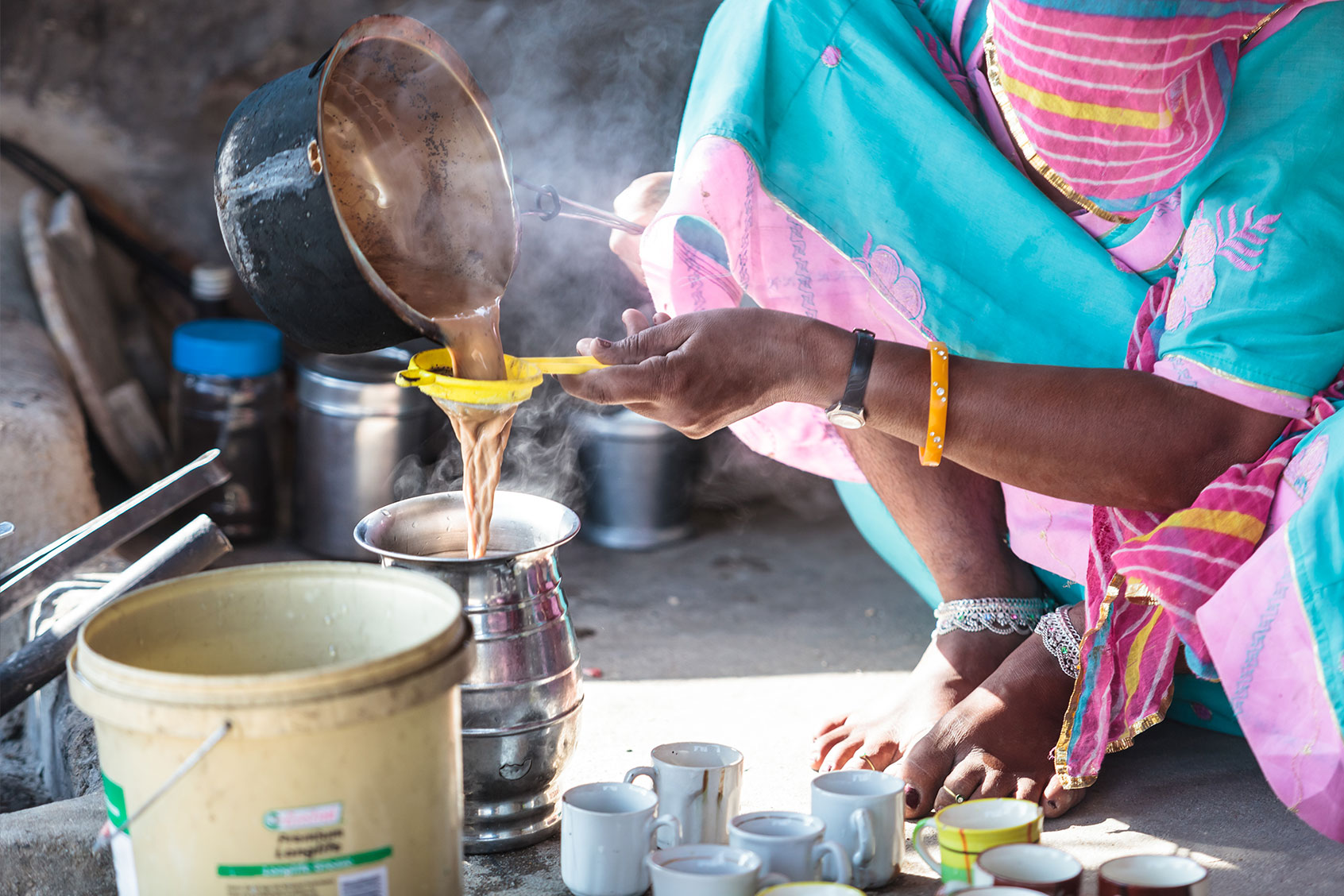
During Holi, the annual Hindu festival of colors, a drink called thandai, which literally translates to "cooling off," makes an appearance in India. Depending on where you go, the traditional milky concoction might be laced with hints of an edible Indian cannabis called bhang.
What is bhang? An avocado-green paste made with the young leaves, flowers, and stems of the cannabis plant, which get soaked, ground, and then mixed with whole milk or yogurt to make a shake. The legal status of cannabis in India is fuzzy — in some states it's permissible, in others not — but go for a drive in many places and you'll spot government-run stores beaming back at you with the words "Bhang Shop" in bright scarlet letters.
Cultivation of this plant has been a part of Indian cuisine and culture since the time of the Vedas, appearing in early scriptures from 1500 B.C. and thereafter. "It's an indigenous plant and has been around for over 3,000 years on the subcontinent," says Indian archaeologist and culinary anthropologist Kurush Dalal about this variety known as cannabis indica.
During this time of the year, bhang holds cultural significance for Indians. Holi is linked to various Indian gods and goddesses like Krishna, Radha, and Vishnu, and from the perspective of bhang, specifically, to the story of Shiva. According to legend, during the "churning of the ocean of milk" (samudra manthan), an act undertaken by Hindu gods to obtain an elixir of immortality (amrit), it is believed that cannabis grew wherever droplets of this elixir fell on earth. A parallel narrative runs that this churning led to the creation of a poison that lord Shiva was summoned to drink. His consort Parvati offered bhang to relieve the pain. In yet another tale, on the day of Holi, the god of love — Kamadeva — shot an arrow at Shiva and disrupted his meditation. It's not surprising then that cannabis is used in Shiva worship by some schools of Shaivism, and since Holi is connected to him, it's a day to indulge in bhang.
"In popular culture, cannabis consumption started out as a farmer's recreational activity. India is an agricultural country, and life on the farm is hard. So the farmer would consume it to relax the muscles at the end of a day," says Dalal. The country has several varieties of cannabis, and each region, from the northern state of Himachal Pradesh, to the southern state of Kerala, has hybrid varieties of cannabis known as malana cream and idukki gold respectively. Dalal took a road trip to the northwestern state of Rajasthan and spotted shops selling bhang pellets that are either savored on their own or mixed with dairy-based drinks like lassi or thandai.
On Holi especially, the pellets are blended with thandai, a mixture of almonds, cardamom, fennel seeds, rose petals, peppercorns, poppy seeds, saffron, and milk. The resulting drink can range from mildly to moderately intoxicating. With brief notes of spices, as if indicating the waning of fall-winter, and cooling floral notes of rose jam, as if indicating the waxing of spring-summer, this is one drink that tastes of the turn of the season.







